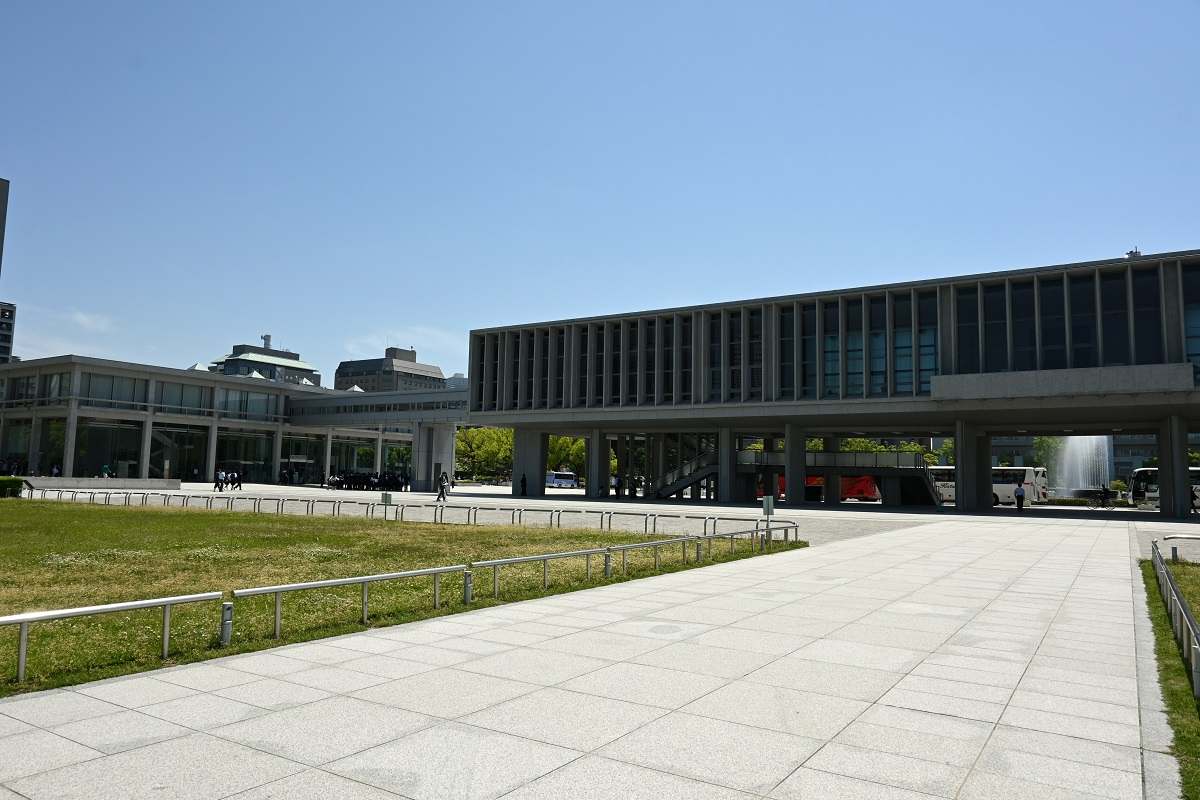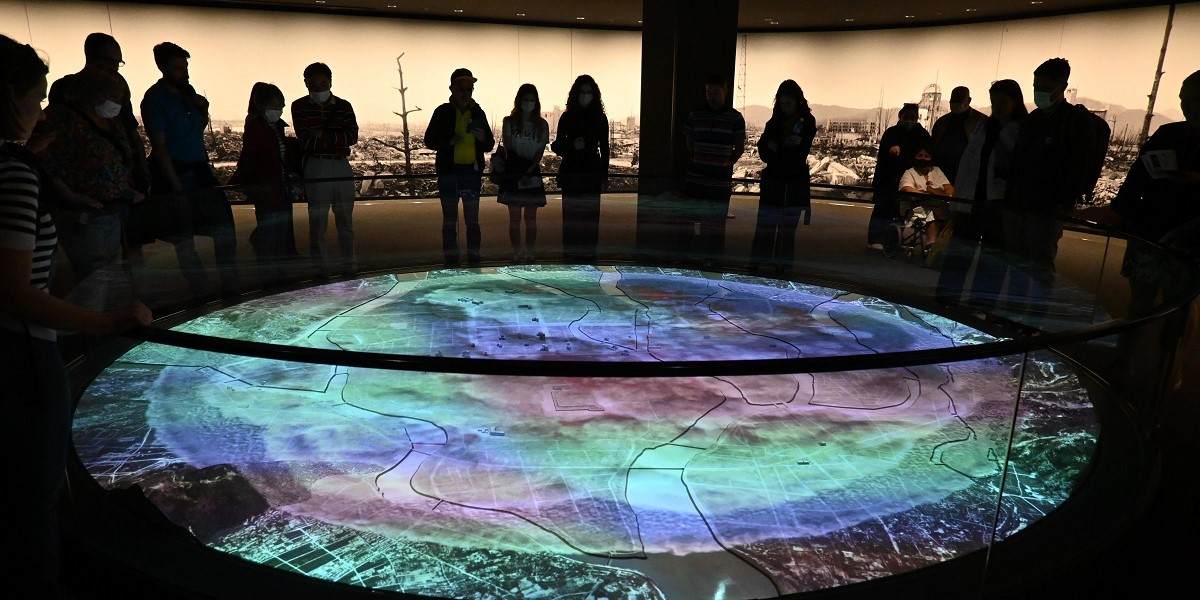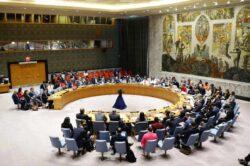
The Hiroshima Peace Memorial Museum is seen in Naka Ward, Hiroshima.
16:50 JST, May 18, 2023
The leaders of eight invited countries, including India and South Korea, also plan to visit the museum on the sidelines of the G7 Hiroshima Summit to be held on May 19-21.
To help build momentum toward realizing a world without nuclear weapons, Kishida will serve as the guide at the museum.
During the summit, the prime minister intends to lead the G7 to call on Russia to refrain from using nuclear weapons and press China to improve the transparency of its nuclear capability. The G7 heads are expected to issue a declaration and separate communique relating to nuclear weapons.
Kishida has envisaged the museum visit since Hiroshima was decided as the host city for the G7 summit last May. He has repeatedly and publicly reiterated the importance of having world leaders engage with the realities of the atomic bombing.
But despite Kishida’s intentions, the gap between the ideals and realities of nuclear weapons is widening. Amid Russia’s ongoing aggression in Ukraine, fears continue to heighten over Moscow’s possible use of such weapons. According to the U.S. Defense Department, meanwhile, China is expected to increase its number of nuclear warheads to about 1,500 by 2035. With North Korea also continuing to develop nuclear weapons and missiles, nuclear deterrence is a critical issue for Japan, which is neighbored by Russia, China and North Korea.
In response to the deeply serious security environment, the United States has accelerated moves to strengthen its nuclear deterrence. Last October, Washington released the Nuclear Posture Review, which lays down guidelines for its nuclear weapons strategy. The document states that nuclear deterrence is the country’s “top priority,” while underscoring the U.S.’s commitment to providing a nuclear umbrella for its allies, including Japan.
The Japanese government has maintained its policy of not participating in the Treaty on the Prohibition of Nuclear Weapons. This is likely because nuclear powers are not state parties to the treaty, in addition to the view held by many people that the treaty disregards the harsh security environment.


Top: Visitors to the Hiroshima Peace Memorial Museum on April 27 look at CG images projected to show Hiroshima before and after the 1945 atomic bombing.
Bottom: Visitors look at photos and drawings depicting people shortly after the atomic bombing.
The prime minister thus intends to promote realistic ways of achieving nuclear disarmament while maintaining and strengthening the Treaty on the Non-Proliferation of Nuclear Weapons (NPT), to which the five nuclear powers are signatories. To help increase impetus for the Hiroshima summit, Japan last December held the first meeting of the International Group of Eminent Persons for a World without Nuclear Weapons. With an eye on emphasizing dialogue between nuclear and nonnuclear states, the group includes members from Russia and China.
G7 Chair Kishida will have an important role to play in getting the G7 members to unite and deliver a message from the atomic-bombed city of Hiroshima to China and Russia in order to realize a world free of nuclear weapons.

The Atomic Bomb Dome in Hiroshima Peace Memorial Park in Hiroshima
"Politics" POPULAR ARTICLE
-

Japan to Support Central Asian Logistics Route That Bypasses Russia, Plan to Be Part of Upcoming Summit in Tokyo
-

Japan to Tighten Screening of Foreigners’ Residential Status by Providing Information of Nonpayment of Taxes
-

Takaichi Cabinet Approval Holds at 72% as Voters Back Aggressive Fiscal Stimulus, Child Benefits
-

Chinese, Russian Bombers Flew Unusual Path by Heading Toward Tokyo; Move Likely Meant to Intimidate Japan
-

Takaichi Meets Many World Leaders at G20 Debut in Johannesburg; Speaks with Heads of Countries Including Italy, U.K., Germany, India
JN ACCESS RANKING
-

Keidanren Chairman Yoshinobu Tsutsui Visits Kashiwazaki-Kariwa Nuclear Power Plant; Inspects New Emergency Safety System
-

Imports of Rare Earths from China Facing Delays, May Be Caused by Deterioration of Japan-China Relations
-

University of Tokyo Professor Discusses Japanese Economic Security in Interview Ahead of Forum
-

Japan Pulls out of Vietnam Nuclear Project, Complicating Hanoi’s Power Plans
-

Govt Aims to Expand NISA Program Lineup, Abolish Age Restriction
























